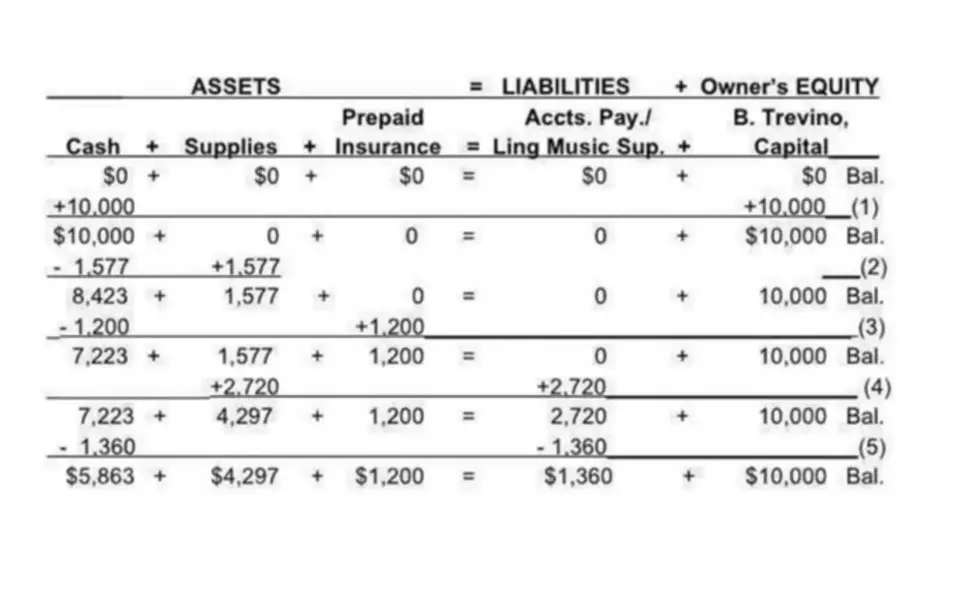
Management Assertion Definition
Content
- Assertions related to Assets, Liabilities, and Equity Balances at the period end:
- Documentation of Substantive Analytical Procedures
- Assertions in Auditing
- Define what is meant by a management assertion about financial statements.
- Understanding Financial Statement Assertions
- GL Accounts: What Are They and How Do They Work in Double-Entry Accounting

The auditor is tasked with authenticating the accounts receivable balance as reported through a variety of means, including choosing a particular accounts receivable customer and examining all related activity for that particular customer. Account balance assertions apply to the balance sheet items, such as assets, liabilities, and shareholders’ equity. However, it is difficult to measure whether the statement is indeed true. Similarly, with financial statements, it is difficult to determine what financial information is free from material misstatement. Define what is meant by a management assertion about financial statements.

Financial statement assertions are claims made by companies that attest that the information on their financial statements is true and accurate. Information related to the assertions is found on corporate balance sheets, income statements, and cash flow statements. There are five assertions, including accuracy and valuation, existence, completeness, rights and obligations, and presentation and disclosure. The Sarbanes-Oxley Act (SOX), issued in 2002, added https://www.bookstime.com/ additional responsibility to the management of publicly traded companies. Management of these corporations was now required to assess and assert as to the effectiveness of the organization’s internal controls over financial reporting. Consequently, in addition to assessing the presentation of an organization’s financial statements, auditors must evaluate the internal controls within the processes that could materially impact the financial statements.
Assertions related to Assets, Liabilities, and Equity Balances at the period end:
Inventory is another area that auditors may review to determine that inventory is properly valued and recorded using the appropriate valuation methods. Completeness helps auditors verify that all transactions for the period being examined have been properly entered in the correct period. Some of these include reviewing accounts and reconciliation of payables to supplier statements. The entity holds or controls the rights to assets, and liabilities are the entity’s obligations.
SOX also created the Public Company Accounting Oversight Board (PCAOB)—an organization intended to assess the work performed by public accounting firms to independently assess and opine on management’s assertions. The PCAOB’s Auditing Standard number 5 is the current standard over the audit of internal control over financial reporting. Rights and obligations assertions are used to determine that the assets, liabilities, and equity represented in the financial statements are the property of the business being audited.
Documentation of Substantive Analytical Procedures
We’re firm believers in the Golden Rule, which is why editorial opinions are ours alone and have not been previously reviewed, approved, or endorsed by included advertisers. Editorial content from The Ascent is separate from The Motley Fool editorial content and is created by a different analyst team. Mary Girsch-Bock is the expert on accounting software and payroll software for The Ascent.
- Put simply, the company confirms that it has legal authority and control of all the rights (to assets) and obligations (to liabilities) highlighted in the financial statements.
- That’s because nearly every financial metric used to evaluate a company’s stock is computed using figures from these financial statements.
- In summation, assertions are claims made by members of management regarding certain aspects of a business.
Isaac enjoys helping his clients understand and simplify their compliance activities. He is attentive to his clients’ needs and works meticulously to ensure that each examination and report meets professional standards. Accuracy & Valuation Assertion – Transactions, events, balances, and other financial matters have been disclosed accurately at their appropriate amounts. 1 Assertions are representations by management that are embodied in financial statement components. However, knowing what these assertions are and what an auditor will be looking for during the audit process can go a long way toward being better prepared for one.
Assertions in Auditing
Audit assertions, also known as financial statement assertions or https://www.bookstime.com/articles/management-assertionss, serve as management’s claims that the financial statements presented are accurate. Accounting management assertions are implicit or explicit claims made by financial statement preparers. These assertions attest that the preparers abided by the necessary regulations and accounting standards when preparing the financial statements. The concept is primarily used in regard to the audit of a company’s financial statements, where the auditors rely upon a variety of assertions regarding the business.
- Current guidelines limit users to a total of no more than 10 requests per second, regardless of the number of machines used to submit requests.
- By doing so, you’ll be well-prepared to face the audit procedure with financial information that’s compliant, complete, and correct.
- Bank deposits may also be examined for existence by looking at corresponding bank statements and bank reconciliations.
- Information related to the assertions is found on corporate balance sheets, income statements, and cash flow statements.
- This assertion confirms the liabilities, assets, and equity balances recorded in a financial statement actually (you guessed it) exist.
- For certified public accountants (CPAs) and other auditors, determining the veracity of these assertions involves testing various aspects of the financial records and disclosures.



この記事へのコメントはありません。